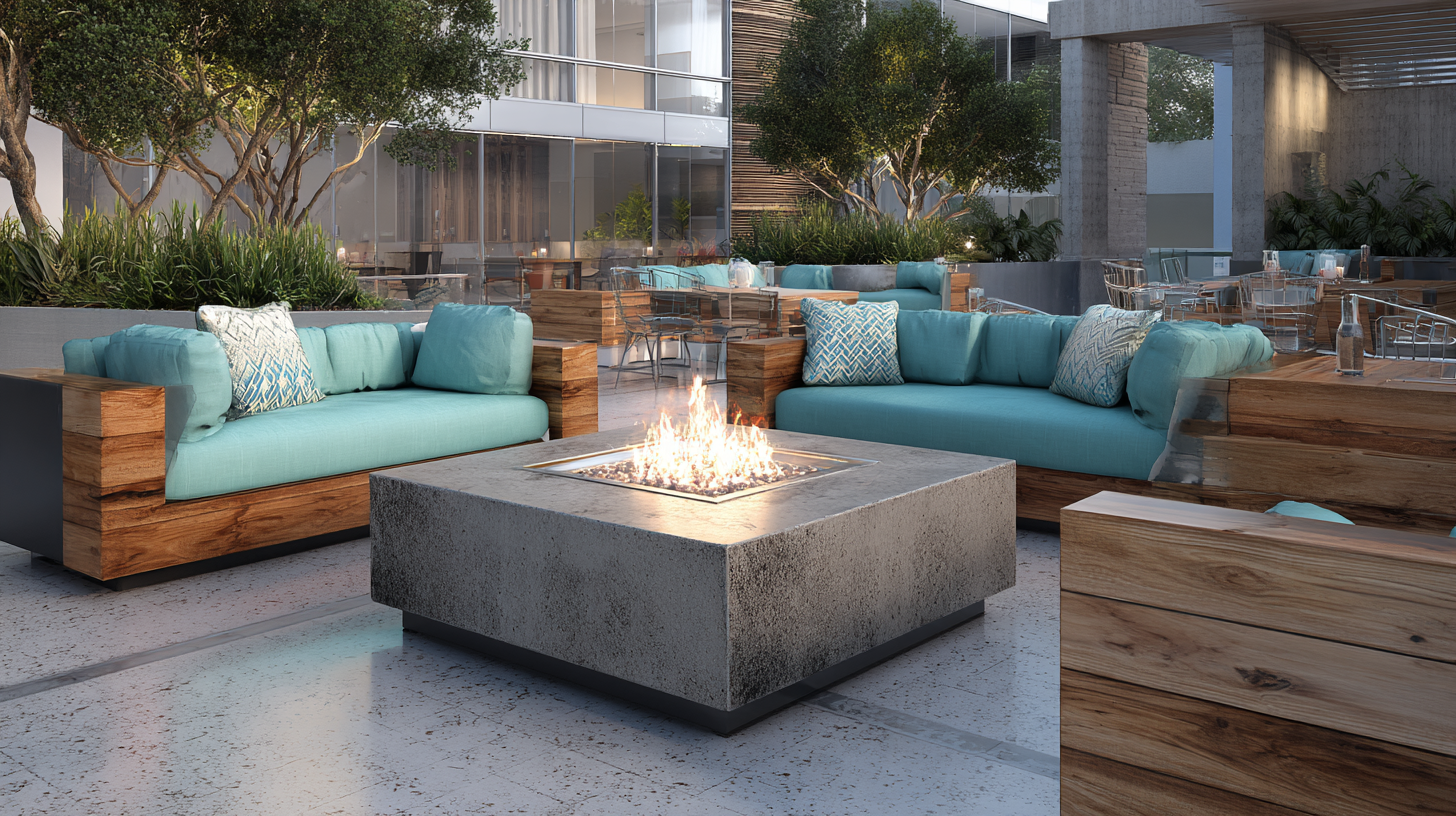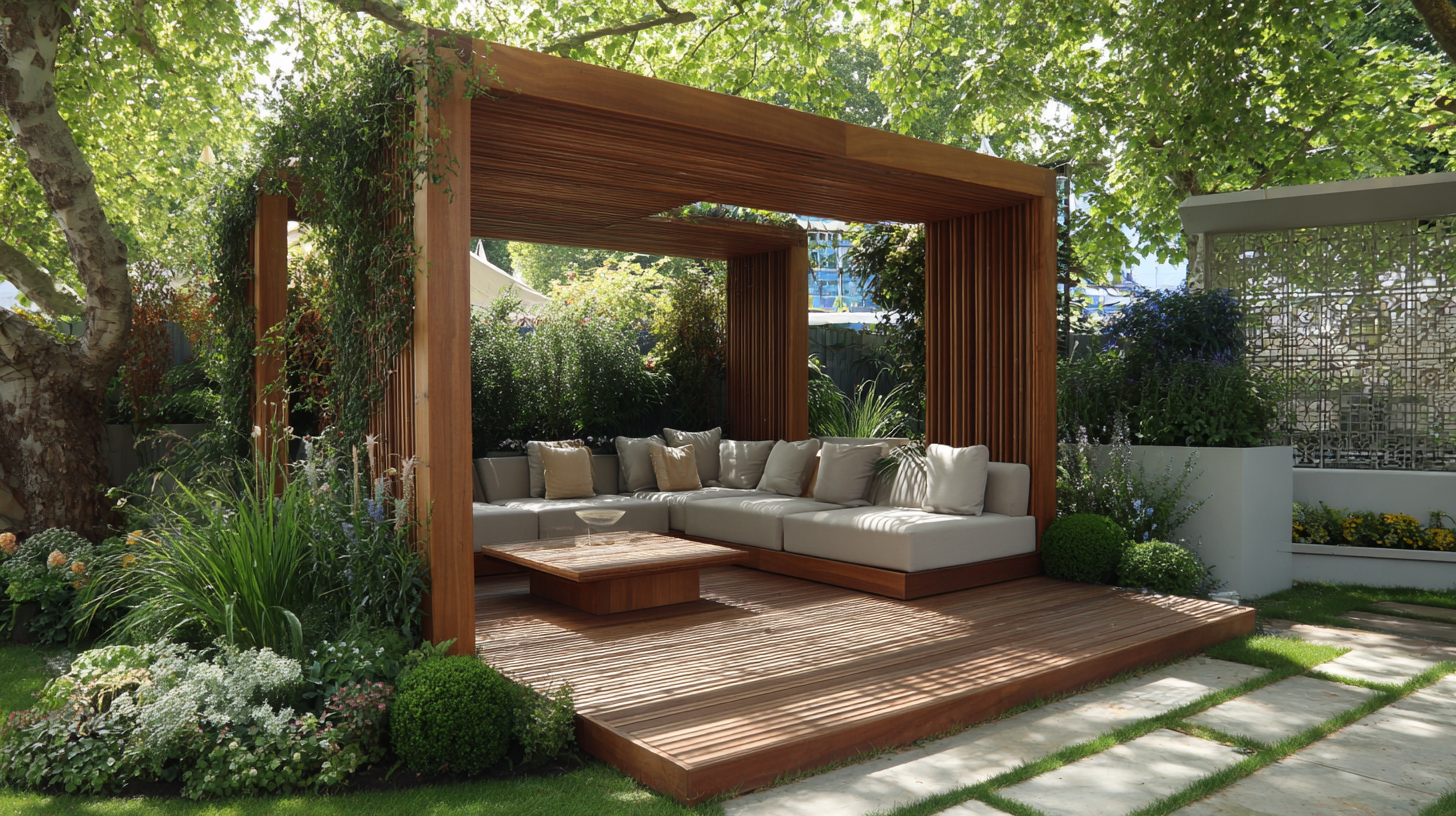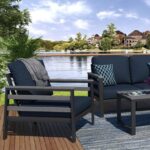Ultimate Comparison of Best Site Furniture Options for Your Outdoor Spaces
When it comes to enhancing outdoor spaces, the choice of site furniture plays a pivotal role in creating inviting environments that promote social interaction and relaxation. According to a recent industry report by the International Recreation and Park Association, well-designed outdoor seating and amenities can increase user satisfaction by up to 40%, demonstrating the substantial impact of thoughtful site furniture selection. Moreover, a survey conducted by the Landscape Architecture Foundation highlights that 88% of park users believe that quality furnishings significantly enhance their overall outdoor experience.

With diverse options available, from park benches and picnic tables to waste receptacles and bike racks, it’s crucial to compare the best site furniture options suited for various outdoor settings. This ultimate comparison will not only guide you through the top choices but also empower you to make informed decisions that elevate your outdoor spaces for both aesthetic appeal and functional use.
Types of Outdoor Furniture: A Comprehensive Overview
When it comes to enhancing outdoor spaces, understanding the various types of outdoor furniture is crucial. According to a recent report from the Outdoor Industry Association, the outdoor furniture market in the U.S. is projected to grow by 5.5% annually, reflecting the rising trend of outdoor living. From dining sets to lounge chairs, each category plays a significant role in creating a welcoming atmosphere in gardens, patios, and balconies.

One of the popular categories includes dining furniture, which not only facilitates meals but also serves as a gathering spot for friends and family. A survey by Statista noted that 37% of consumers prefer to invest in high-quality dining sets for outdoor use. Similarly, lounge furniture, such as hammocks and sectionals, has seen a surge in demand, with reports indicating a 6% increase in sales over the past year. This rise illustrates a shift in consumer preferences towards comfort and relaxation, making these items essential for any outdoor setup.
Additionally, storage solutions like outdoor cabinets and sheds help maintain the longevity of outdoor furniture by protecting it from the elements. According to the American Society of Landscape Architects, proper maintenance and storage can extend the lifespan of outdoor furniture by 50% or more. As homeowners continue to prioritize outdoor aesthetics, understanding these furniture types will not only help enhance outdoor enjoyment but also contribute to increased property value.
Key Materials Used in Outdoor Furniture and Their Benefits
When it comes to selecting outdoor furniture, the material used is a crucial factor influencing both aesthetics and functionality. Wood, particularly teak and eucalyptus, is a popular choice due to its natural beauty and durability. Teak contains natural oils that resist moisture, preventing warping and degradation over time. This makes it ideal for various weather conditions. Eucalyptus, on the other hand, offers a budget-friendly alternative with a beautiful grain, and when properly treated, it can last for many seasons outdoors.
Metal is another prevalent option, with aluminum and wrought iron leading the way. Aluminum is lightweight and rust-proof, making it easy to rearrange in your outdoor spaces while also standing up to the elements. Wrought iron provides a classic look and exceptional durability; however, it requires more maintenance to prevent rust.
For those who prefer a contemporary feel, synthetic materials like resin wicker or plastic have become increasingly popular. These materials mimic the appearance of natural fibers while offering superior resistance to fading and wear, making them perfect for all outdoor settings. Each material comes with its own set of benefits, ensuring there's something to match your style and practical needs.
Comparing Durability: Industry Standards for Weather Resistance
When choosing site furniture for outdoor spaces, durability is one of the most critical factors to consider, particularly in relation to weather resistance. The performance of outdoor furniture is heavily influenced by the materials used, which must withstand various environmental conditions, from intense sun exposure to heavy rainfall.

Industry standards around weather resistance often focus on factors like UV stability, moisture resistance, and overall structural integrity. By selecting furniture that meets these standards, homeowners can ensure lasting enjoyment of their outdoor areas without the frequent need for replacement.
Emerging trends in sustainable building materials highlight innovative approaches that enhance the durability of outdoor furniture. For instance, materials such as bamboo are gaining attention for their strength and ability to withstand the elements while also offering eco-friendly benefits. This type of sustainable furniture not only minimizes carbon emissions during production but can also contribute to maintaining a balance in outdoor aesthetic with nature.
As trends evolve, the integration of advanced technologies into the design of outdoor furniture systems aims to provide higher durability and improved performance against the demands of weather exposure, ensuring that your outdoor spaces remain both functional and beautiful for years to come.
Aesthetic Considerations: Matching Furniture with Your Outdoor Decor
When selecting outdoor furniture, aesthetics play a crucial role in creating a cohesive look that enhances your outdoor space. According to the 2023 Outdoor Living Report, 72% of homeowners prioritize aesthetic appeal when choosing outdoor furnishings. This statistic underscores the importance of matching your furniture with existing decor elements, such as architectural styles and landscaping. For instance, a modern deck can benefit from sleek, minimalist furniture that complements clean lines, while a rustic garden may require weathered wood pieces to harmonize with organic surroundings.
Moreover, color selection is vital in achieving visual coherence. A study from the National Association of Landscape Professionals reveals that color psychology significantly affects outdoor ambiance; shades of blue and green promote relaxation, while warmer tones like red and orange can energize the environment. When selecting outdoor furniture, consider colors that either complement or contrast with your existing decor to create visual interest without overwhelming the space. Pairing neutrals with vibrant accent cushions is an excellent strategy to enliven the area while maintaining a balanced aesthetic. Emphasizing these elements ensures your outdoor space not only serves functionally but also becomes a visually stunning extension of your home.
Ultimate Comparison of Best Site Furniture Options for Your Outdoor Spaces - Aesthetic Considerations: Matching Furniture with Your Outdoor Decor
| Furniture Type | Material | Durability | Aesthetic Fit | Maintenance Level |
|---|---|---|---|---|
| Dining Set | Teak Wood | High | Classic | Medium |
| Lounge Chairs | Aluminum | Very High | Modern | Low |
| Café Table | Wrought Iron | Medium | Rustic | Medium |
| Outdoor Sofa | Synthetic Rattan | High | Contemporary | Low |
| Fire Pit | Steel | Medium | Industrial | High |
Cost vs. Quality: Evaluating Long-Term Value in Site Furniture
When selecting site furniture for outdoor spaces, balancing cost and quality is vital for ensuring long-term value. According to a report by the Furniture Manufacturers Association, investing in quality site furniture can yield significant returns over time. For instance, high-grade materials such as aluminum and weather-resistant wood can last up to 15 years longer than lower-cost alternatives, which often need replacement every few years. This not only minimizes expenditure in the long run but also reduces environmental impact through less frequent disposal.
Moreover, a study by the Outdoor Furniture Research Group highlights that durable site furniture typically requires less maintenance, which contributes to lower overall costs. For instance, while cheaper plastic options may seem attractive initially, they often require higher upkeep and are prone to fading and damage from the elements. With an estimated 30% of maintenance costs associated with outdoor furniture being avoided through smart material choices, selecting high-quality pieces becomes an economical strategy for enhancing outdoor spaces while ensuring satisfaction for years to come.
Ultimate Comparison of Best Site Furniture Options for Your Outdoor Spaces
This chart compares various site furniture options based on cost and quality, evaluating their long-term value for outdoor spaces. The data reflects average costs and quality ratings based on user feedback.

 Catalog
Catalog Replacement Cushions
Replacement Cushions New Jersey Catalog
New Jersey Catalog